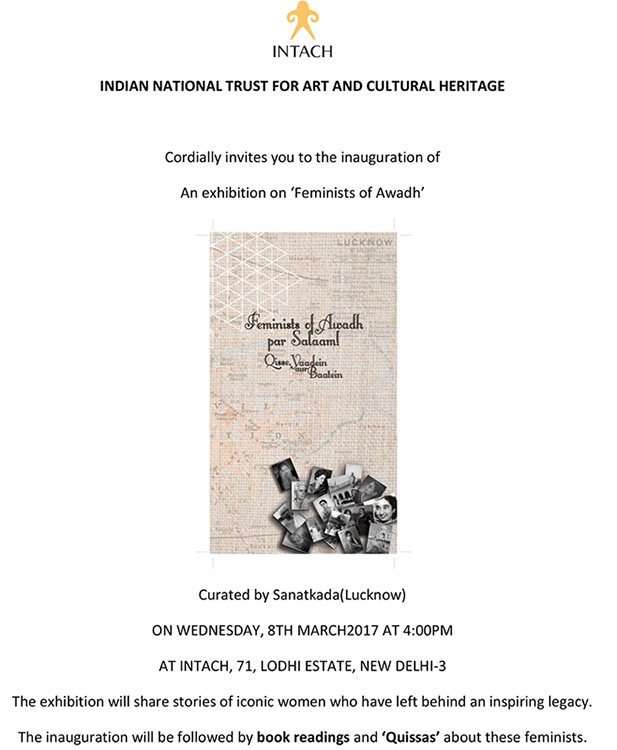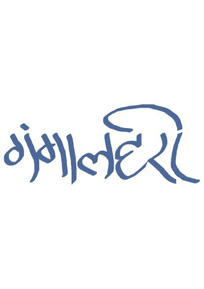Events Archives
-
World Tourism Day
Lecture on ‘Potential Tourist Attractions in India – Spiritual and Traditional Wellness Practices’ by Mala Barua
Date: 27th September 2016
Time: 4.00pm
Location: Multipurpose Hall, INTACH, New DelhiAs a part of our endeavor to holistically promote Indian Heritage, we are planning to celebrate ‘World Tourism Day’ with the lecture on leveraging India’s spiritualism and traditional wellness practices as potential tourist attractions.
In this context, it gives us great pleasure to invite you to the lecture by Ms. Mala Barua who tries to bring ancient wisdom of spiritual knowledge to people through a simple language and on an easy- to-understand platform. She curates retreats, where masters of various traditions are carefully chosen to deliver this ancient wisdom, be it Yoga, Ayurveda or Vedanta, in a modern language.
-
World Heritage Week Celebrations
(i) Curated walk of the National Museum, Janpath, New Delhi
Date: 16th November, 2016
Time: 11.30am
Location: Multipurpose Hall, INTACH, New DelhiHarappan Gallery with Dr. Sudeshna Guha, Professor, Archaeology, Shiv Nadar University, Delhi and Former Tagore Scholar with the Harappan Collection at National Museum
About the Gallery
The collections in this gallery grew out of the discoveries of the pioneering excavations made during early 20th century, and later after the Indian independence, in 1947. The Harappan civilization is believed to be one of the oldest world civilizations together with Egypt and Mesopotamia. Objects in this gallery remain the richest and most important of their kind in the world. The Harappan civilization developed along the mighty river, Indus and for that reason it is also known as the Indus Civilization. Most of the exhibits in this gallery come from important centers of the Harappan Civilization and ancient towns like Harappa, Mohenjodaro, Nal (now in present-day Pakistan), Dholavira, Kalibangan, Lothal and Rakhigarhi (in India). The wealth and variety of the exhibits in this gallery offer both a comprehensive idea and evidence of continuity of the Indian cultural legacy.The Decorative Arts Gallery with Dr. Anamika Pathak, Curator, Decorative Arts and Textiles at National Museum
About the Gallery
Every culture has its distinct features, which is clearly reflected in its art, ranging from tiles and wood carvings, ceramic or metal utensils to textiles and jewellery. These functional objects are created manually, and help us in understanding the social, religious, economical, commercial and technological development of the society. The significant period of decorative arts for the world is usually from the sixteenth century. However, in India, its history goes back to the period of Harappan Civilization (c.3500-1500 BCE). Artists in India had taken inspiration from nature and its symbolic meanings, which is reflected in all forms of Indian art including decorative arts. Artefacts of the decorative arts group are crafted for daily, ceremonial and religious uses from a variety of materials like ivory, jade, ceramic, textile, wood, metal, glass, paper, leather and bone. An array of intricate techniques such as engraving, casting, carving, inlaying, embossing, weaving, printing, dyeing and embroidering are used by the skilled craftsmen to create beautiful works of art and utility. The rich decorative arts collection of National Museum covers utilitarian, ritualistic and secular objects, which have been displayed in four galleries: one gallery each for Wood Carvings and Textiles, and two galleries devoted to decorative arts.(ii) Lecture Demonstration on ‘Tabla’ by Pandita Anuradha Pal
Date: 18th November 2016
Time: 6.30pm
Location: Multipurpose Hall, INTACH, New DelhiPandita Anuradha Pal is a disciple of tabla legends, Ustad Alla Rakha & Zakir Hussain and hailed as the first professional female Tabla Virtuoso.
The TABLA is one of the most popular instruments of not only Indian music but World Music at large. Originally a North Indian percussion instrument, the Tabla has now transcended geographies and styles of Music, to be used prominently not only in Hindustani & Carnatic Music but also increasingly used in Jazz, Flamenco, Western classical, Rock, Ballet, Pop, Electronica and other World Music.
(iii) Lecture on ‘Heritage, Diversity and Future’ by Dr. G. N. Devy, Chair, People’s Linguistic Survey of India
Date: 21st November 2016
Time: 3.30pm
Location: Multipurpose Hall, INTACH, New DelhiAmong his better known English publications are After Amnesia (1992), Of Many Heroes (1997), Indian Literary Criticism (2003), Nomad Called Thief (2007), The G N Devy Reader (2009). He has published about 15 books in the area of literary criticism, 6 in Anthropology and 30 in Linguistics, the last being parts of the massive 50 volumes series of The PLSI covering 780 languages.
-
Conveners’ Dinner – ‘Delhi Daawat’
Date: 9th February 2017
Location: India International Centre, Max Mueller Marg, New DelhiThe State Conveners were treated to heritage foods from Delhi during the Annual INTACH State Conveners’ Conference in February. Professor Pushpesh Pant-eminent writer, historian, food critic curetted a special menu and gave an illustrated talk delving into the history, current availability and fascinating stories about foods identified with the cuisine landscape of Delhi.
-
International Women’s Day
Exhibition on ‘Feminists of Avadh’ by Sanat Kada
Date: 8th – 14th March 2017
Location: INTACH, New DelhiIt gives us great pleasure to invite you to an exhibition on women pioneers and feminists of Awadh who have left behind an inspiring legacy. These are stories of women who may not have necessarily stepped out into the public domain and assumed roles traditionally associated with men, but through their writings, art, social work and even effective manage¬ment of the domestic place, engaged with the outside world and asserted their identities leaving a strong impression on generations to come.
The stories range from Begum Akhtar, the first woman to have performed on stage, writers like Shivani, Attia Hosain, Ismat Chughtai Qurratulain Hyder, Rashid Jahan , member of the Constituent Assembly Begum Aizaz Rasul, doctors like Dr Engineer and Dr Kutty, peasant leader like Jaggi Devi and Nautanki performer Ghulab Bai and then the unknown ‘meri bua’, ‘meri dadi’ and ‘meri ma’.
The inauguration will be accompanied by short book readings and Qissas about some of these exceptional women.
-
Lecture on ‘Gangalahari’ by Professor Monika Horstmann
Recital of selected verses from ‘Gangalahari’ by Vidya Shah
Date: 18th March 2017
Time: 3.00pm
Location: Multipurpose Hall, INTACH, New DelhiINTACH and SOUTH ASIA INSTITUTE (SAI), Heidelberg University cordially invites you to an announcement of INTACH’s forthcoming publication GANGA | RIVER OF LIFE & ETERNITY – a collection of essays presenting the many attributes of Ganga. It explores the beliefs, histories, traditions, arts, and cultures of India that emanate from Ganga – as a river and a Goddess. The essays present the unbroken continuity of Ganga’s veneration; and her role in the making of the region’s diverse and rich cultural geography. It simultaneously addresses the challenges the river faces today as it sustains a growing population on its banks. It is the first book on Ganga, where the divine river will be presented in all its symbolisms and narratives.
Monika Boehm-Tettelbach (aka Horstmann) is one of the contributors to the book. She retired as a Professor of Modern South Asian Studies from Heidelberg University. She is interested in the interface of religion and politics, especially from the 16th century onwards. Her regional focus has mainly been on Rajasthan. Monographs include a study Govinddev, the central deity of Jaipur; a study of the religious policy of Maharaja Savai Singh; a book on royal funerals and the ritual of succession. Working from manuscripts from the 17th century onwards, she is currently preparing a study on the link between Nath yoga and Nirguna bhakti.
An Introduction to Pandit Jagannath’s Gangalahari: A devotional poem in 52 shlokas dedicated to the goddess Ganga by Pandit Jagannath, a Sanskrit scholar and poet from the court of Shah Jahan. Legend has it that he wrote one shloka for each step on the ghat of the Ganga where he was fasting. At the completion of the last shloka the river claimed Jagannath for her own.
An inaugural event of GANGA | RIVER OF LIFE AND ETERNITY Festival
A National Mission for Clean Ganga Initiative
-
The Ninth Pupul Jayakar Memorial Lecture
‘Relevance of the study of Ancient Indian Heritage to Contemporary Society’ by Professor Vasant Shinde
Date: 18th April 2017
Time: 6.15pm
Location: India International Centre, Max Mueller Marg, New DelhiIt gives us great pleasure to invite you to the Ninth Pupul Jayakar MemorialLecture – ‘Relevance of the study of Ancient Indian Heritage to Contemporary Society’ by Professor Vasant Shinde. The lecture will cover Ancient India’s contribution to basic sciences and technologies using archaeological evidence from Harappan and some later period sites and their continuity till the modern times. Harappans, who flourished in the Indian subcontinent from 5000-1500 BCE, were responsible for the introduction of Indian Knowledge system and most of the basic technologies and sciences.
Prof. Vasant Shinde, currently Vice Chancellor of Deccan College, Post-Graduate and Research Institute, Deemed University, Pune, is a world renowned archaeologist and one of the foremost scholars in South Asia. A pioneer in archeological research, Prof. Shinde has directed a vast number of excavations around the country, from the Harappan sites in Gujarat and Haryana to Chalcolithic sites in Madhya Pradesh and the Deccan to Protohistoric and Early historic sites in Rajasthan and Maharashtra.












